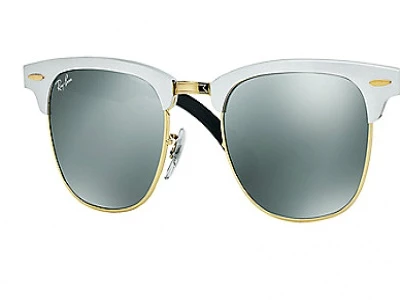Why are nose pads important?
Nose pads sit between the rim of the frame and the wearer's nose, and their importance in ensuring comfort and a good fit cannot be overstated. Nose pads are designed to provide a comfortable resting point for your glasses, helping to distribute the weight of the glasses. This helps to reduce pressure on your face, eliminates discomfort and prevents marks or indentations from forming on your nose bridge. Cushioned nose pads can provide additional comfort, with a soft pad to cushion against any irritation or soreness.
Nose pads also ensure a good fit, helping to keep the glasses in place. They allow glasses to remain secure on your face throughout your activities, preventing the frames from slipping. This is useful during long periods of work at a desk or laptop. Aside from these benefits, nose pads are also considered fashionable.
Types of nose pads
Nose pads come in two general types: fixed and adjustable. Fixed nose pads can't be moved and are usually used on metal or plastic frames. They are often found on high-grade plate eyewear. Adjustable nose pads are positioned by welding the brackets of the eyeglasses and are typically non-metallic.
Silicone is used for the most common type of nose pads. It's soft, flexible, comfortable, and ideal for outdoor activities. Silicone moulds to the shape of your nose, helping to distribute the weight more evenly. The main downside of Silicone is that it needs regular cleaning, as it absorbs dirt and sweat easily.
Polyvinyl Chloride (PVC) comes in soft and hard variants. Like Silicone, it makes glasses comfortable to wear. PVC nose pads don't need to be cleaned quite so often.
Polycarbonate (PC) is a good option for those who prefer firmer nose pads. PC is very lightweight but highly durable. Polycarbonate is a great option if you want solid and resistant nose pads.
Metal is more durable than Silicone but may be less comfortable. They are often found on metal frame glasses. Metals such as titanium are commonly used.
Acetate nose pads, typically found on plastic frame glasses, are usually integrated into the frame. They are more durable than plastic and less likely to snap or crack, but they are not adjustable.
Alternative nose pad materials include glass, rubber, and ceramic. Nose pads from these materials are rare, usually more exclusive, custom-made, and expensive.
Nose pad attachment
As well as being made from different materials, nose pads are attached to glasses differently.
Screw-in or screw-on nose pads are screwed into the frame. These can be difficult to replace, as many manufacturers do not provide replacement screws. If possible, keep the original screws safe if a nose pad replacement is necessary.
Push-in or push-on nose pads usually have a rectangular extension that attaches to the frame. They are easy to attach and replace. However, that also means they can easily be lost.
Slide-in or slide-on nose pads have a round bump on the back. A lip on the outer edge lets you slide the nose pads into the glasses. They are more secure than push-in nose pads.
Clip-on or crimp-on nose pads have a metal clasp on their back and two prongs. They are often made of either soft Silicone or soft-firm PVC. The clasps attach to each side of the frame.
Adhesive nose pads usually work well with plastic frames and are simply stuck in place. Adhesive nose pads are generally made from Silicone.
Caring for your nose pads
Over time, nose pads can accumulate dirt and oil from your skin. This will eventually lead to discomfort and slippage. Regularly cleaning your nose pads with a soft cloth and mild soap keeps them in good condition. Pads of silicon or PVC absorb significant amounts of sweat and dirt, so regular cleaning is recommended.
Replacing old nose pads
Nose pads can become worn down over time. Look at the nose pads first if your glasses don't fit properly. Regular replacement is often the answer. A professional can adjust your replacement nose pads to ensure a perfect fit. How frequently you change your nose pads depends on various factors. One is the material they are made from. Silicone wears out relatively quickly, while Polycarbonate is far more durable. Another factor is how often you use your glasses and the quality of manufacture. Cheaper nose pads are usually made to a lower standard and may need to be replaced more frequently.
In conclusion, while node pads may be small and often overlooked, they play a crucial role in the comfort and functionality of eyewear. With an understanding of their function, variety and proper care, you can significantly enhance your glasses-wearing experience.
Read more about glasses repair and maintenance
Can you repair scratched sunglasses?
How do I clean glasses properly?
Are rimless glasses fragile?


